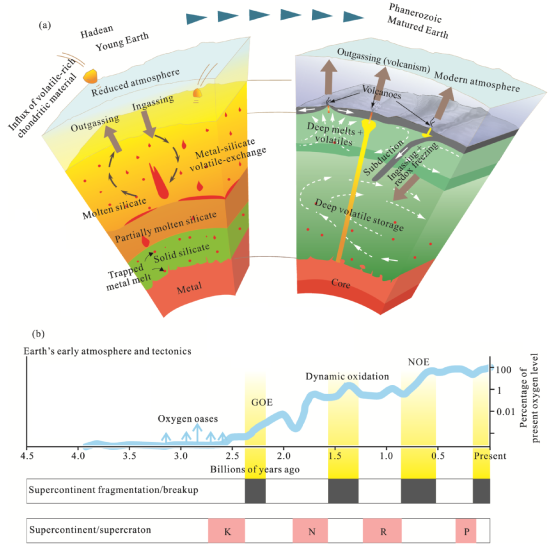Zhensheng Wang 1, Junfeng Zhang1, Keqing Zong1, Timothy M. Kusky *1, 2, Yanxin Wang *3, 4
1. State Key Laboratory of Geological Processes and Mineral Resources, Center for Global Tectonics, School of Earth Sciences, China University of Geosciences, Wuhan 430074, China
2. Badong National Observatory and Research Station for Geohazards, China University of Geosciences, Wuhan 430074, China
3. State Key Laboratory of Biogeology and Environmental Geology, China University of Geosciences, Wuhan 430078, China
4. School of Environmental Studies, China University of Geosciences, Wuhan 430078, China
Earth is the only planet known to be habitable, and is also unique with its liquid water, and the operation of plate tectonics. The geological record shows that the habitability of our planet can rapidly recover from major disasters or catastrophes, even those that cause mass extinctions. We suggest that plate tectonics, which acts as a link between the shallow and deep, is pivotal for the formation, evolution, and long-term stability of the hydrosphere, atmosphere, lithosphere, and thus life. Plate tectonics links the surface environment with the deep interior of high viscosity, low Reynolds number, low entropy, and low chaos, able to produce a strong healing effect to neutralize catastrophic events. It can transfer the bio-essential elements from the deep interior to the near-surface environment and can recycle toxic elements to the deep. This unique planetary energy and material transfer process of Earth is a continuous, slow-release, and bidirectional cycle, where a change in the surface is slowly buffered by a reaction from the deep, shaping a long-term and stable habitable environment. Therefore, it is considered that plate tectonics is the basic condition for the long-term stable evolution of the Earth's biosphere and the stabilizer of the Earth’s habitability.

Original source:Wang Z S, Zhang, J.F., Zong, K.Q., Kusky, T.M., Wang, Y.X. Plate Tectonics: The Stabilizer of Earth’s Habitability Journal of Earth Science. 2023; 34: 1645-1662. https://doi.org/10.1007/s12583-023-1864-9.